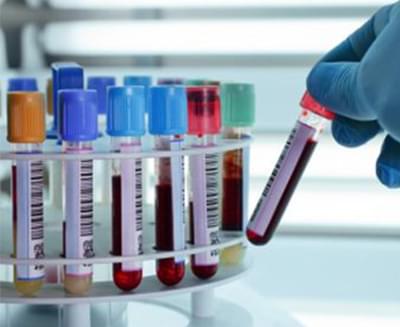
What is the First Trimester Serum Screening?
Today, it is possible to detect about 50% of fetal abnormalities using a special detailed ultrasound (USG) technique during the 11-14 weeks of pregnancy. The First Trimester Serum Screening is a blood test that can be combined with the result of this special ultrasound screening. The test measures two proteins in the blood: free beta HCG and PAPP-A.
With ultrasound, the gestational age can be calculated, potential abnormalities in the fetus can be detected, and the thickness of the fluid under the skin fold at the back of the baby's neck (nuchal translucency) can be measured. This fluid is present in all babies at this stage.
When combined with the blood test, about 90% of pregnancies with Down syndrome and Trisomy 18 can be detected at this stage.
What does a thickened 'nuchal translucency' mean?
A thickening in this area may indicate a chromosomal disorder, a heart defect, or another health condition in the baby. However, sometimes healthy babies may also have thickened nuchal translucency. The higher the thickness, the greater the possibility of a problem with the baby. On the other hand, if the nuchal translucency is within normal limits during ultrasound, the risk of chromosomal diseases (Trisomy 21, 18, and 13) is very low, and this can be communicated to the family. Therefore, any invasive test aimed at learning about the baby's chromosomal structure carries its own risk of miscarriage.
However, an important point to note is that a thickened nuchal translucency does not necessarily mean that the baby has a disease, and a normal nuchal translucency does not guarantee the baby's health. These tests are only done for risk assessment. Based on the results of these tests, invasive testing can be done to definitively determine if there is a disease in the baby. In approximately 5% of pregnancies, an increased risk (greater than 1/300 for Trisomy 21) is detected through maternal age and nuchal translucency measurement, necessitating an invasive test for chromosomal analysis.
What are the advantages of these tests?
It has been shown that the combination of first trimester serum screening and nuchal translucency measurement leads to a reduction in the number of babies born with Trisomy 21 and Trisomy 18.
By calculating the risk early in the pregnancy, families can decide whether to undergo invasive testing earlier. These tests can also help diagnose a heart condition in the baby at an earlier stage of pregnancy.
What is Down Syndrome (Trisomy 21)?
Trisomy 21 is the most common chromosomal abnormality. It occurs in about 1/800 live births and is typically not inherited, but rather develops spontaneously in each pregnancy. The condition is characterized by having three copies of chromosome 21 instead of the usual two. The risk increases with the mother's age. Babies with Trisomy 21 often have developmental delays and/or various structural abnormalities.
What is Trisomy 18 (Edwards Syndrome)?
Trisomy 18 occurs in about 1/5000 live births. The risk also increases with maternal age. Babies with this condition typically have severe structural abnormalities and are often miscarried during pregnancy or die within the first few weeks of life.
Who is a candidate for First Trimester Screening and Nuchal Translucency Measurement?
First trimester serum screening, when combined with a special ultrasound exam, can be offered to all patients under 35 years old, as the risk for Trisomy 21 and 18 is low. This test cannot detect risks for other chromosomal abnormalities. For patients over 35, risk calculation may be done before deciding on invasive testing, using nuchal translucency measurement if desired. However, if the patient wants to be absolutely sure that the baby does not have chromosomal abnormalities, they may choose to skip this test and proceed directly with an invasive test (amniocentesis or chorionic villus sampling).
What does a high-risk result mean?
If the risk for Trisomy 21 is calculated to be higher than 1/250 after the test, it is considered a high risk. However, this does not necessarily mean that the baby will have a chromosomal disorder. For the test result to be accurate, there must be no multiple pregnancies, and the gestational age must be known precisely. Your doctor will discuss the results with you in detail. However, the only way to definitively determine whether there is a chromosomal disorder is to undergo invasive testing.
How is the First Trimester Serum Screening performed?
Nuchal translucency measurement alone can diagnose about 80% of babies with Down syndrome and Trisomy 18. When combined with the blood test, this figure increases to 90%. However, these tests are not sufficient to diagnose other potential problems with the baby. Therefore, a detailed ultrasound should be performed around the 20th week as well. For multiple pregnancies, since blood testing cannot be performed, only nuchal translucency measurement can be used, diagnosing about 80% of cases of Down syndrome.
Second Trimester:
What does the AFP screening in the second trimester mean?
This blood test is used to screen for neural tube defects. Neural tube defects refer to problems like anencephaly and spina bifida, which are related to the closure of the spinal cord. Babies with these conditions may experience neurological problems. AFP is a protein normally present in the blood of all pregnant women. The test is most reliable between 15+0 and 18+0 weeks of pregnancy. Like other tests mentioned above, this is a screening test used for risk assessment rather than providing a definitive diagnosis. A detailed ultrasound following this test can provide a definitive diagnosis. The AFP test can diagnose about 85% of spina bifida cases and 60% of abdominal wall defects (omphalocele and gastroschisis).
What are Neural Tube Defects?
These are birth defects that occur when the spinal cord or skull fails to close properly during fetal development. Open neural tube defects are the most common group of serious fetal abnormalities (approximately 1-2% of live births). Most babies born with these defects do not have a family history of similar conditions. If the defect affects the skull, it can also involve the spinal cord, leading to neurological problems or hydrocephalus (fluid accumulation in the brain). Surgery may be needed after birth.
The decision to undergo this test is made by the patient. If the result indicates a high risk, it does not mean the condition is present, but it does suggest that a detailed ultrasound examination should be performed.

